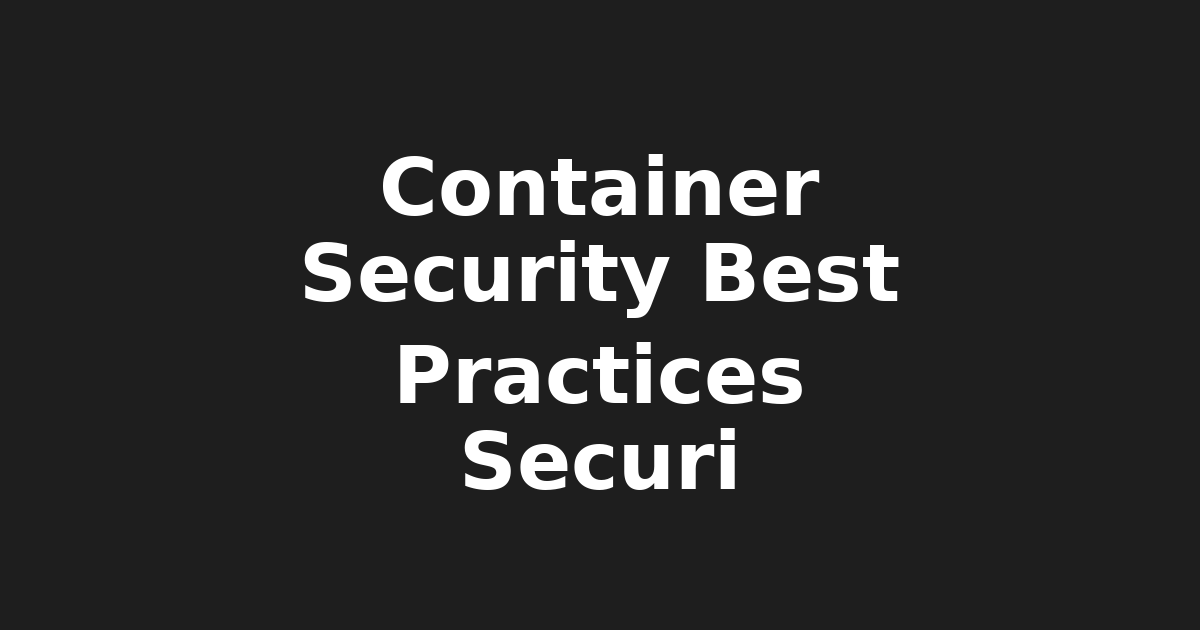Mastering Container Security: Best Practices for Docker & Kubernetes

Container Security: A Crucial Focus in Today's Tech Landscape - Josh from KeepItTechie
Hello there tech enthusiasts! It's me, your friendly guide, Josh from KeepItTechie. Today, we're diving into a hot topic that's buzzing within the developer and IT communities: Container Security.
Why all the fuss? Well, with the escalating adoption of containerized applications like Docker and Kubernetes, securing these little powerhouses has become an absolute priority for organizations worldwide. Let me break it down for you in a way that's as simple as a piece of pie. 🥧
First off, let's talk best practices for securing containerized environments. Here are a few tips to get your security game on point:
- Least Privilege Principle: Ensure containers run with the least privileges necessary to perform their tasks. This helps limit potential damage if a container is compromised.
- Multi-Factor Authentication (MFA): Enable MFA for accessing your container registries, reducing the risk of unauthorized access.
- Regular Updates: Keep your container images up-to-date to protect against known vulnerabilities.
- Network Segregation: Isolate containers from each other and the host system using network policies and namespaces.
- Monitoring and Logging: Implement robust monitoring and logging solutions to detect and respond to potential security incidents.
Now, let's address a significant concern: understanding the risks associated with container orchestration. Orchestration tools like Kubernetes make managing containers a breeze, but they can also create new attack surfaces if not properly secured. Here are some key points to consider:
- Secrets Management: Protect sensitive information such as passwords and API keys by using secure secrets management systems like HashiCorp Vault or AWS Secrets Manager.
- Role-Based Access Control (RBAC): Implement RBAC within your container orchestration platform to control who can access and manipulate containers.
- Pod Security Policies: Use pod security policies to enforce security rules for container runtime permissions, seccomp profiles, and other security features.
Speaking of security tools, let's explore some container-native solutions. These are tools designed specifically to secure containers and their environments:
- Open Policy Agent (OPA): An open-source, general-purpose policy engine that can be used to enforce policies across your containerized environment.
- Twistlock: A comprehensive container security platform offering vulnerability management, runtime protection, and policy enforcement.
- ** Aqua Security**: Offers a range of container security solutions, including the ability to scan images for vulnerabilities during build time and runtime protection.
Lastly, let's not forget about securing application development pipelines. Building and deploying applications in containers can introduce new risks if not handled properly. Here are some tips:
- Code Scanning: Regularly scan your codebase for known vulnerabilities using tools like Snyk or WhiteSource.
- Automated Testing: Implement automated testing to ensure your application behaves as expected and doesn't introduce any unexpected security risks.
- Continuous Integration/Continuous Deployment (CI/CD): Incorporate security checks into your CI/CD pipeline to automatically detect and remediate potential vulnerabilities.
Remember, staying ahead of the curve in container security means keeping up-to-date with the latest trends and best practices. As of 2025, 73% of organizations are using or plan to use containers, so it's crucial to prioritize your container security efforts.
In closing, here's a little motivational tip for you: Keep learning, keep growing, and above all, stay curious! The tech world is ever-evolving, and those who adapt and learn will thrive. Until next time, happy coding! 💻🚀✨
🙋♂️ This post was brought to you by Josh from KeepItTechie — helping you break into tech, one command at a time.
